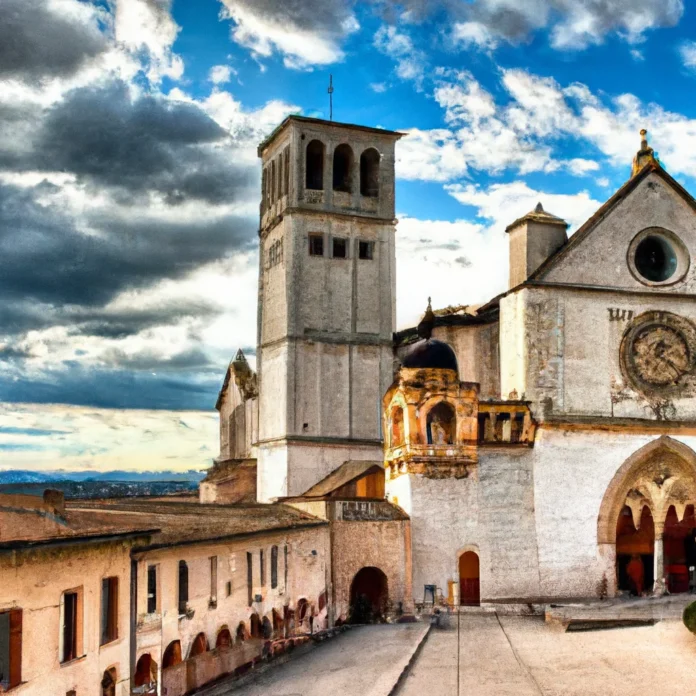In the heart of Italy lies one of the most significant pilgrimage sites in the world: the St. Francis Basilica of Assisi. This architectural marvel not only embodies the spirit of Saint Francis but also serves as a testament to the rich historical and cultural heritage of Assisi. Our walking tour through this enchanting city will provide an in-depth analysis of the basilica, its surroundings, and the historical context that makes this destination a must-visit.
The Significance of St. Francis Basilica
The Basilica of St. Francis, completed in 1253, is a UNESCO World Heritage Site and stands as a symbol of peace and spirituality. It consists of two churches: the Upper Church and the Lower Church, which are linked by a crypt that houses the remains of St. Francis. This dual structure reflects the dual nature of St. Francis himself—his commitment to both the sacred and the earthly.
Architecture of the Basilica
The Upper Church
The Upper Church is characterized by its magnificent frescoes, which were painted by renowned artists such as Giotto and Cimabue. These artworks not only serve a decorative purpose but also tell the story of the life of St. Francis and the values he championed. The vaulted ceilings and tall windows allow natural light to illuminate the vibrant colors of the frescoes, creating an atmosphere of divine inspiration.
The Lower Church
In contrast, the Lower Church is more austere, reflecting the humility of St. Francis. It features a simpler design with lower ceilings and dimmer lighting, creating a contemplative space for prayer and reflection. The crypt, located beneath the altar, is where visitors can pay their respects to St. Francis, making it a focal point of pilgrimage.
Historical Context
The Basilica was built shortly after the death of St. Francis, who founded the Franciscan Order and is revered for his devotion to poverty and charity. The basilica not only commemorates his life but also serves as a center for the Franciscan community. Over the centuries, it has played a crucial role in the religious landscape of Italy and beyond.
Visiting the Basilica
Opening Hours and Admission
The basilica is open to the public year-round, with specific hours that may vary seasonally. Visitors can enter free of charge, although donations are appreciated to help maintain this historic site. It is advisable to check the official website before planning your visit to ensure you have the most current information.
Guided Tours
While it is possible to explore the basilica independently, we recommend taking a guided tour to gain a deeper understanding of its significance. Knowledgeable guides provide insights into the art, architecture, and history that may not be immediately apparent to the casual visitor.
Other Notable Sites in Assisi
Assisi is not only home to the Basilica of St. Francis; it offers a variety of other historical and cultural sites worth visiting. The town itself is a UNESCO World Heritage Site, characterized by its medieval architecture and stunning views of the Umbrian countryside.
The Basilica of Santa Chiara
Dedicated to Saint Clare, a follower of St. Francis, this basilica features a beautiful Romanesque façade and houses the remains of its namesake. The church is known for its stunning stained glass and serene atmosphere, making it a perfect complement to your visit to the Basilica of St. Francis.
The Roman Forum
Located in the heart of Assisi, the Roman Forum dates back to the 1st century BCE and showcases the ancient history of the town. The ruins provide a glimpse into the everyday life of the Romans and are an essential part of Assisi’s rich tapestry of history.
The Eremo delle Carceri
Just a short distance from the city center lies the Eremo delle Carceri, a serene hermitage where St. Francis and his followers would retreat for prayer and meditation. This site offers a tranquil escape and a chance to connect with the spiritual legacy of St. Francis amidst the natural beauty of the surrounding forest.
Cultural Experiences in Assisi
Assisi is not only a site of historical significance but also a living cultural hub. Throughout the year, the town hosts various festivals and events that celebrate its rich traditions.
Annual Events
One of the most notable events is the Feast of St. Francis, celebrated on October 4th. The town comes alive with processions, masses, and cultural performances, drawing visitors from around the world. Participating in this celebration offers a unique insight into the local customs and the deep reverence the community has for St. Francis.
Local Cuisine
The culinary offerings in Assisi reflect the richness of Umbrian cuisine. From olive oil to truffles, the local gastronomy is deeply connected to the land. We encourage visitors to savor local dishes such as strangozzi (a type of handmade pasta) and porchetta (roasted pork), often accompanied by the region’s acclaimed wines.
How to Book on Viator
For those interested in guided tours that encompass the Basilica of St. Francis and other significant sites in Assisi, we recommend booking through Viator. Their platform offers a variety of options tailored to different interests and budgets. Visit the following link to secure your booking: Viator Booking Page.
Conclusion
In summary, the Private St. Francis Basilica of Assisi and the surrounding city offer a profound experience steeped in history, spirituality, and culture. From the remarkable architecture of the basilica to the engaging local traditions, Assisi stands as a testament to the enduring legacy of St. Francis and the rich heritage of Italy. For further information and to plan your visit, consider exploring resources from Tourlik.
Disclaimer: This information is accurate to the best of our knowledge; however, there may be changes or mistakes. Please verify exact details on the Viator booking page.


